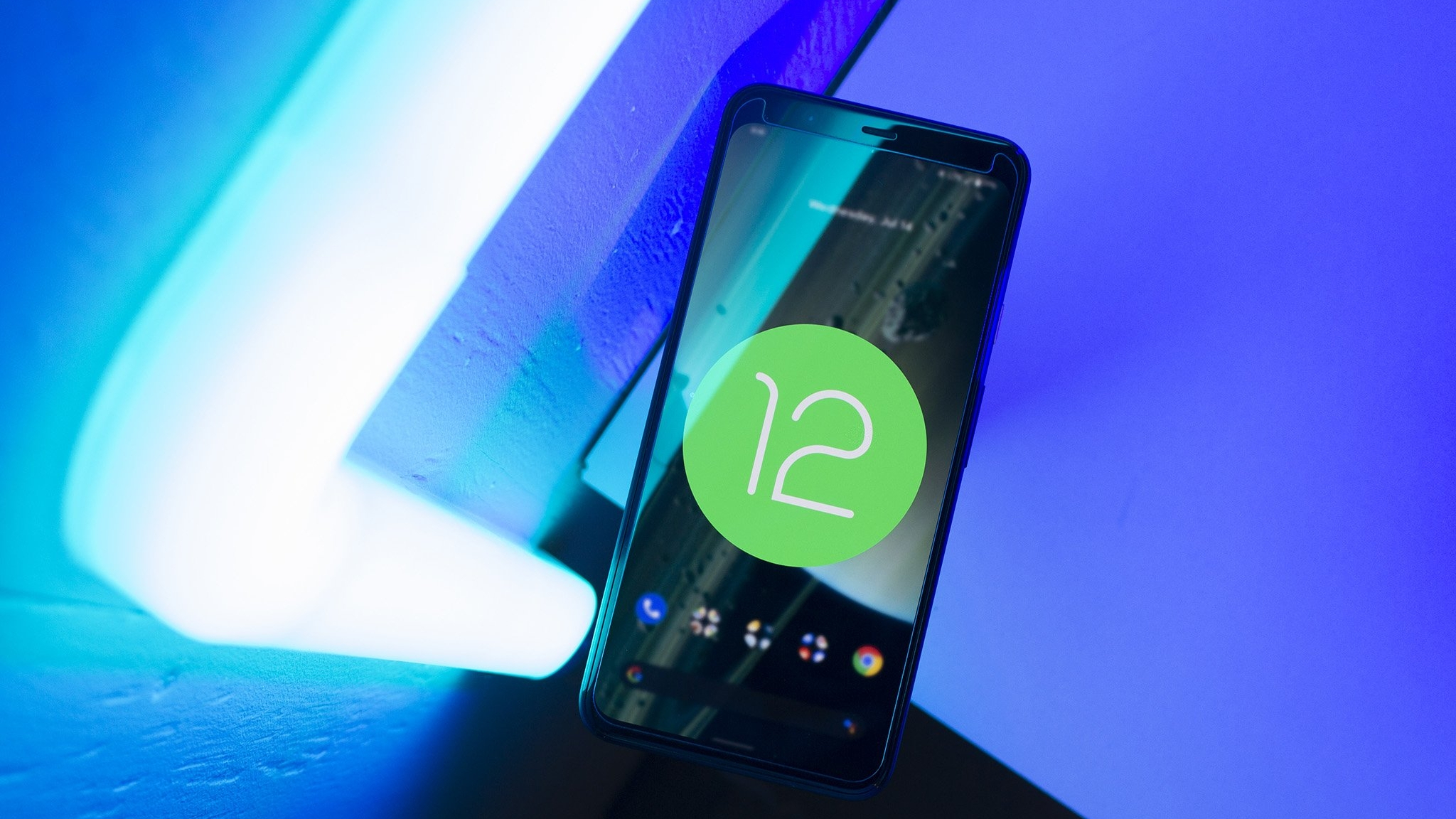Android 5.0 Lollipop: The Android Central Editors' roundtable
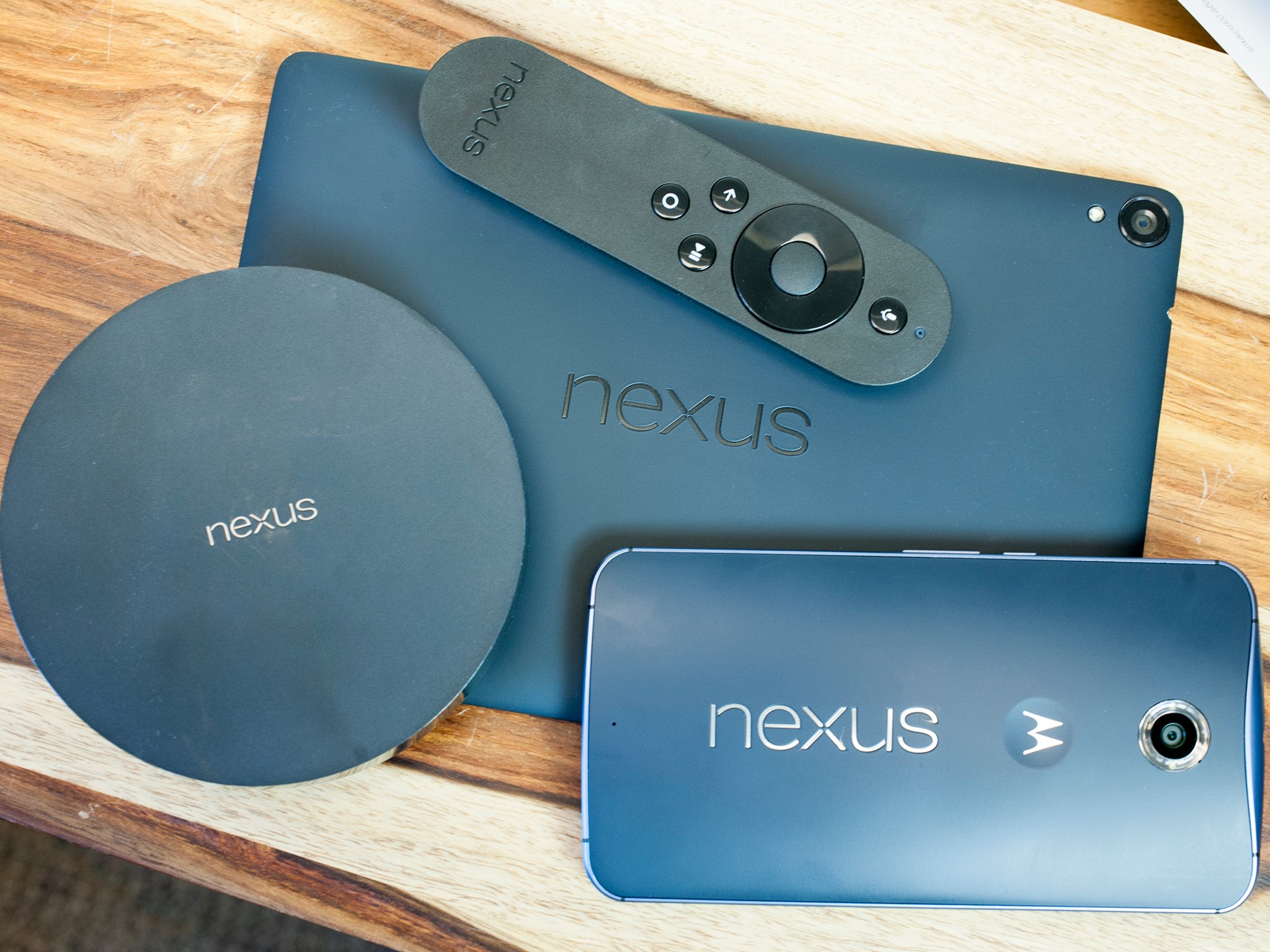
The Android Central Editors get together and talk all about Lollipop
It's one of our favorite times of the year once more. New version of Android time. A year or so on from KitKat getting out into the wild, Google is back with another sweet treat for us in the form of Android 5.0 Lollipop. New software also means new Nexus devices, with the Nexus 9 and Nexus 6 official, and at least in some cases available to order.
What Google did a little differently this year, though, is letting folks play around with the new software well before it was ready to hit the streets on consumer devices. First known as the L Preview, we've been able to load up Lollipop builds on the Nexus 5 and Nexus 7 for a little while now and get to grips with Google's latest and greatest.
And that's exactly what we did. Besides writing all the news, reviews, feature breakouts and help and how-to posts, the Android Central Editors sat down together round a (virtual) table for a round up of personal thoughts on Lollipop. Read on to find out what we think.
On Material Design …
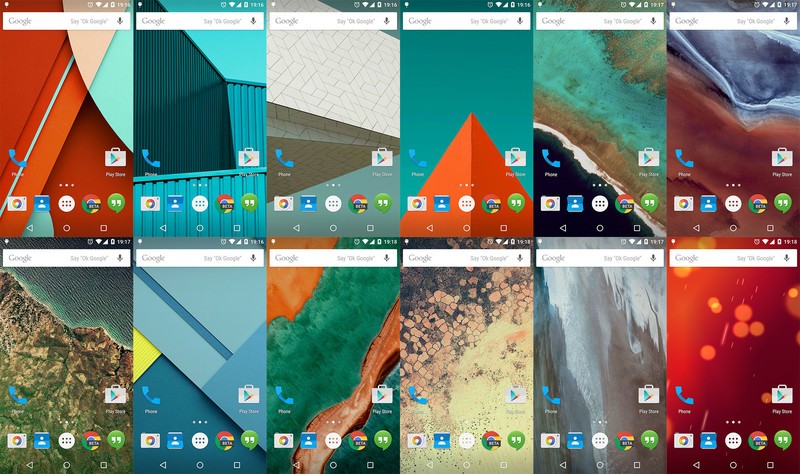
Phil: I didn't play around with the Lollipop Developer Preview (and I'm still calling it Android L in my head) as much as I would have liked. But now that I've been using a full build for a little while — wow. The color palate has taken some getting used to, and I'd still prefer a little more consistency in the Google Apps as far as drawers and sliders and all that (but, again, these are guidelines, right?). But it's the animations that are really sticking out to me. The little things like the way numbers fly in from the corners. Or the new hamburger menu the kids are all over.
Bottom line is it's a different way of doing things, and it really ties together what Google wants to do on mobile as well as the traditional web, and in Chrome OS. It'll continue to change and grow over time. And maybe that's what excites me the most.
Jerry: The important thing about Material Design isn't going to come from Google. Yes, apps like Google+ or Google Play Newsstand look good, have great animations that add character, and seem to work fast. But the few apps from Google aren't all that will be on your phone.
Be an expert in 5 minutes
Get the latest news from Android Central, your trusted companion in the world of Android
Manufacturers will all put their own flavor on and into Material Design. Samsung, LG and HTC need to find a way to build their apps — as well as the overall interface — in a way that compliments the "pure" guidelines that Google and many third-party developers will use. The paper and ink elements of Material won't look good unless there's a consistent feel to the software.
Andrew: We all got excited seeing this new design direction for Android back at Google I/O, but getting it in my hands and seeing how it really "feels" while using a device takes it to a whole new level for me. The subtle little animations aren't super impressive on their own, but throw them together and you get something that looks and feels delightful.
Android 5.0 feels a little more personal and less robotic than the 4.x versions, and I think that was the goal this time around. This is a top-to-bottom makeover of everything in the operating system, and it was done well.
But Material Design isn't just about the phone's interface, it's also about apps being updated — on Android and the web — to really tie everything together. Right now there are a few intrepid developers who have started to look at the new APIs and design guidelines for their apps, but for the most part the only apps that really "fit" with Lollipop are coming right from Google. And that's not a complete experience.
Give it a few months and we'll see apps either updated or launching with Material Design flourishes, and that's really where it all comes together. Just like when Holo design guidelines launched, it will take some time for everything to come together. I can't wait.
Alex: Material Design's importance isn't just limited to Lollipop — it's the new design language for the whole of Google. That's why we've already seen many of the company's Android apps updated with this new visual style on KitKat and older devices. But when it comes to Android 5.0, the big deal is that this OS was designed from the ground up to enable the rich animations and surfaces that make up Google's new design language.
In previous Android versions, the stock OS felt a little like a blank slate — a canvas which manufacturers were expected to slather with their own designs. Android 5.0 feels different. For the first time, vanilla Android has something resembling its own unique personality, and most that is down to Material Design. Screens, menus and other elements don't just appear out of nowhere, they move fluidly onto the screen, or expand out of other layers. The drop-shadowed layers give it a down-to-earth, physical quality, while the animations convey something more ...
Richard: Perhaps the most important part of Material Design is that its unifying Google's design language and it's not going to be exclusive to Lollipop. We're already seeing fresh new app designs from third-party developers hitting the Play Store, and they're like a breath of fresh air. Much as when Holo landed, it's time for a whole new look and feel to the Android we know and love. And it's a look everyone will be able to enjoy.
On its own, though, as you'll see it on a Nexus device, Lollipop is Material gold. There are so many individual parts that on their own may seem unimpressive, that come together as one to create something that is a genuine delight. But more than the subtle animations, the color schemes and any of that, it feels like Android grown up.
On the new features in Lollipop
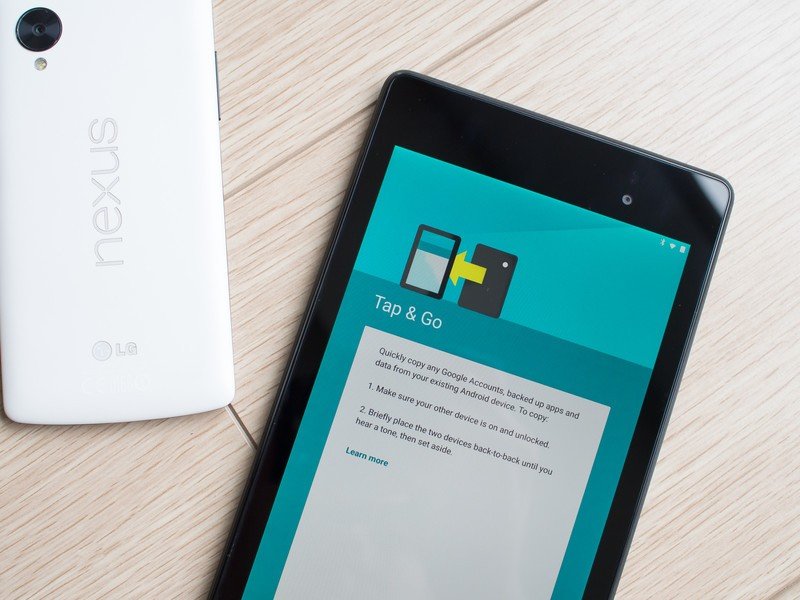
Phil: First, something to remember: For everything that's new in Android 5.0 Lollipop, we still don't know exactly what the manufacturers are going to do. So remember that as you're reading comparisons and walkthroughs. It's going to change. Nexus is not Samsung is not Sony is not HTC or Motorola. And that's a good thing, too. There are some things I think Motorola has done better than stock Android 5.0. I'm not crazy about the Nexus not having a traditional mute setting, instead relying on the "none" notifications scheme. (Just let me silence my phone, dammit!) But probably the most important features are the ones that will be talked about the least. The built-in enterprise "personal/work" containers. (Thanks, KNOX!) The Project Volta battery enhancements. And of course the beginning of 64-bit computing for Android. (OK, that last one probably will be talked about — and misunderstood — a lot.)
Jerry: To be fair, I don't think any of these new features are what the developers have envisioned — yet. They will be polished with point releases and get better over time.
Having said that, they are ready for release and are there for other companies to see and learn from. Very smart and very talented software engineers have enabled ways to do cool new things at the operating system level, and third-parties — like HTC or Motorola, for example — will be able to make small but important alterations to make the features better. Nexus phones are now a consumer device, but they are still the starting point for pure Android and where you need to look to see where to begin making it your own version.
Andrew: Google has made some pretty huge steps forward in the way Android acts and performs. Stock Android has always lacked a few "basic" features, leaving room for manufacturers to fill in the gaps, and with this release Google is getting a little closer to having a more complete experience.
Some of the less-flashy features, like a new way of handling notifications, proper "do not disturb" modes, new APIs, more efficient processing and battery saving are all welcome additions. And for each new headline-worthy item that's included in the first Android 5.0 release we can be sure that there are a few more features lined up and in the works.
I'm still excited to see more integration between Android and Chrome that was teased at Google I/O, as well as better handling of data stored on the cloud and how it integrates into the whole system. Google still has lots of work to do, but getting some of these most basic (by 2014 standards) OS features out the door with 5.0 is a start.
Alex: Just as Android's UI has become more full-featured and fleshed-out in Lollipop, the feature set has been expanded in a few important ways too. Stock Android is now more than just a blank canvas — features like priority notifications and guest mode are functional improvements designed to make Android more usable for regular people. These two features in particular address a couple of major gaps in stock Android's arsenal — making it easier to share your phone without sharing the sum of your personal data, and allowing us to escape the barrage of notifications that's a daily part of life for many of us.
It remains to see how OEMs will adapt these features, or whether they'll be allowed to pave over them with their own functionality. However things progress, the new features in Lollipop will make the vanilla OS more useful for many, and that's a very good thing.
Richard: The Lollipop preview builds haven't even necessarily shown us the full story. But what they have shown us is some fairly basic, yet extremely welcomed new features. Features that manufacturers have been building in for a while now are a great addition that will see things like trusted Bluetooth device support, do-not-disturb modes and Project Volta's battery saving made available to everyone using a Lollipop device. And that's important. It's improving the base experience.
What we, the users, don't see is perhaps most important of all. Lollipop brings with it a ton of new APIs for our favorite developers to get their hands on and make new, ever more awesome things for us to enjoy. That's more exciting than anything we can see, because, well, we haven't seen that stuff yet.
And all this is before we see what the OEMs will do on top of any of this. With Google setting the example, we should get even more great stuff from the likes of HTC, Motorola et al. Only time will tell.
On using Lollipop on current devices …
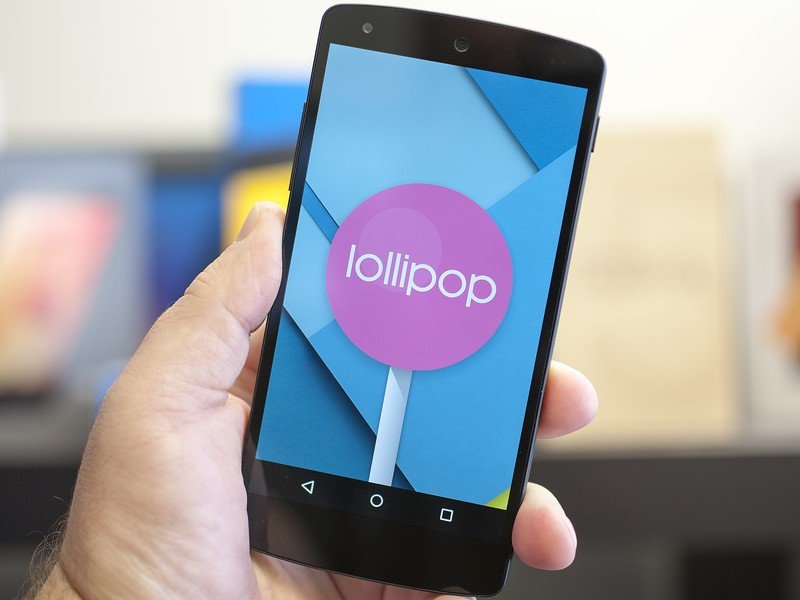
Phil: I'm probably more excited about using Android 5.0 Lollipop on the likes of the Moto X and Galaxy S5 and HTC One than I am lugging around the oversized Nexus 6. Probably on the Nexus 7 as well. (I never got around to putting the developer preview on it.) Those devices probably are my favorites of the past few years, for a number of reasons. And it should be interesting to see what LG does as well, with more design direction from Google than ever before.
Jerry: BRING LOLLIPOP TO MY MOTO X RIGHT NOW. The new look may not be perfect for an AMOLED display (so much white) but I love it. I want to see and use it, with Motorola's changes that make Android better on top of it.
I'm also very curious about what Samsung is going to do with Lollipop. It's fun and easy to knock Samsung for their version of Android, but building something that big and complex out of something that was big and complex to start with is not easy. There are some very talented people working on code at Samsung Mobile, and they surely have some great ideas.
I think HTC will probably do the best work with Lollipop, because they are almost there in terms of design. I'm hoping they can move to the new platform and keep the great unique design they have going now, as well as the nice speedy interface.
Andrew: With how smooth even the second developer preview was on the Nexus 5 and Nexus 7, I'm excited to see how well it runs on current hardware. There's nothing in Android 5.0 that your current 2013 and 2014 flagships can't handle, so all we have to do is wait for manufacturers to get it out the door.
The big question will be how they choose to take on Lollipop and adjust it to their wants and needs. Material Design is a big change, particularly coming from current manufacturer customizations, so I have a feeling they're going to have to pick-and-choose what they want to include in this first round of updates.
For devices like the Moto X that have little software customization to start with, I expect to see a full-on Material Design party going on … and that has me excited.
Alex: I'm not particularly interested in the Nexus 6, and the Nexus 5's battery life makes it a non-starter for me. But I'm eager to see Lollipop adapted to my main stock Android phone, the Google Play edition HTC One M8. While that device may miss out on some of the fancier camera features, the M8 is a fast, beautiful device, and it's sure to be a great platform upon which to experience Android 5.0.
As for other phone makers, we've already seen hints of Samsung's Lollipop plans thanks to recent leaks. And while some may deride any move away from the look and feel of stock Android, Samsung seems to have struck a reasonable balance between TouchWiz and Material Design. Hopefully others can find a way to do the same — to adhere to the Material guidelines while still bringing something unique to the table.
Richard: I've only been using Lollipop on the Nexus 7 but to say it's impressed me is perhaps an understatement. I only recently picked up the Nexus 7 – specifically to load up some Lollipop – and so I didn't really experience it with KitKat on. But it's smooth, snappy, and for a preview build has been very reliable and I've been getting two solid days battery life from it at a time when I'm absolutely hammering it. Lollipop also feels a little more "tablet friendly" than KitKat to me. But I think Nexus 7 owners are going to be very happy.
I'm really excited to start getting updates on other devices on my desk, too. Motorola did great things on top of basically stock KitKat, and the 2013 Moto X I've got here is crying out for it. I'm also looking forward to see what LG can do with it on the G3. I'm not shy about saying the G3 is my favorite phone of 2014, and LG already has some of the flat design and color schemes that Google has in Lollipop baked into its stock, KitKat based ROM. It'll be really interesting to see where it goes with 5.0.
With how smooth the latest preview build has been on current devices, the finished article could be a champ when it starts hitting popular devices from the past 12-18 months.
Everyone will have a favorite feature. So, what's yours?
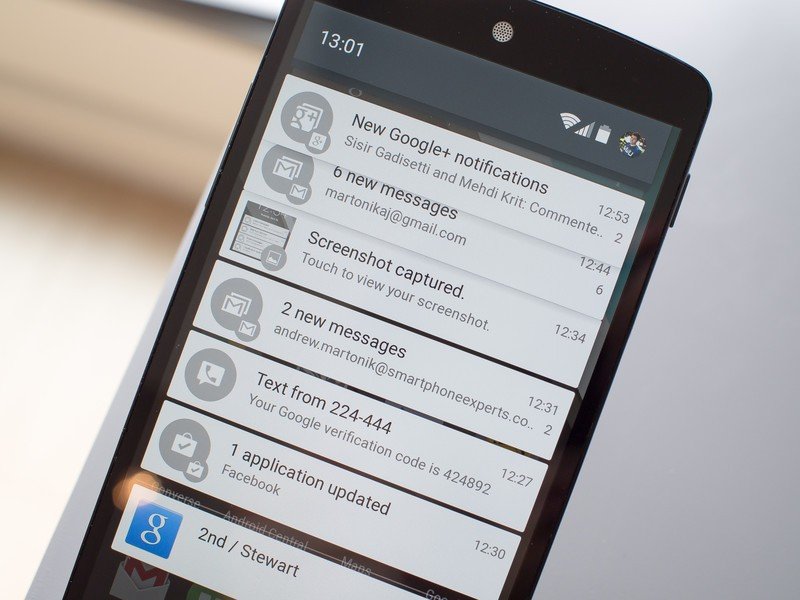
Phil: It's not sexy, but I think trusted Bluetooth (and NFC) devices is one of the more important additions. We all have so much personal data in our phones and in the cloud, there's really no excuse for not having the most basic protection on our phones. And encryption by default is another one. It's our data. It needs to remain that way.
Jerry: The pull down, then pull down again way to get to quick settings from the status bar. Sure, it seems minor, but it's also elegant and functional. I like things that can be both.
Andrew: Aside from the design changes as a whole, the new way of handling notifications in Lollipop has me most excited. Assuming that developers handle this correctly (a big ask, I know), the new varying levels of importance you can set on notifications will help reduce the noise coming from my phone on a daily basis. Lollipop can disturb you with high-value notifications, and let you check low-value ones at your leisure. Add to that the new "do not disturb" features, and it all means a simpler notification experience.
A close runner-up for me is the new setup assistant, which makes getting a new device up and running quicker and far less annoying. Simply letting me bypass the sign-in process by tapping my current device to the new one saves time, and being able to choose exactly what device to restore apps from is a big feature for someone who switches devices so often.
Alex: Does Material Design count a feature? With the new design language in Lollipop, Android seems to have finally grown up, with its own very distinctive design language, color palette and animation style. Beyond the new features and under-the-hood changes, the visuals and animations are in my view the most important change in Android 5.0.
Richard: I'm loving trusted Bluetooth device support baked in most of all. During the day I'm usually wearing a Pebble or a set of Bluetooth earbuds and being able to pair these as a trusted device is the ultimate in convenience. And yet also reassurance that should my device not be with me it'll lock up.
The new setup assistant is pretty sweet, too. Sure, AC staffers may end up setting up a lot more devices than some people, but how it's handled in Lollipop is fantastic. The ability to tap your new device to your existing one and have it bypass signing in is slick, and ridiculously convenient.
On the Nexus 9 and the Nexus 6…
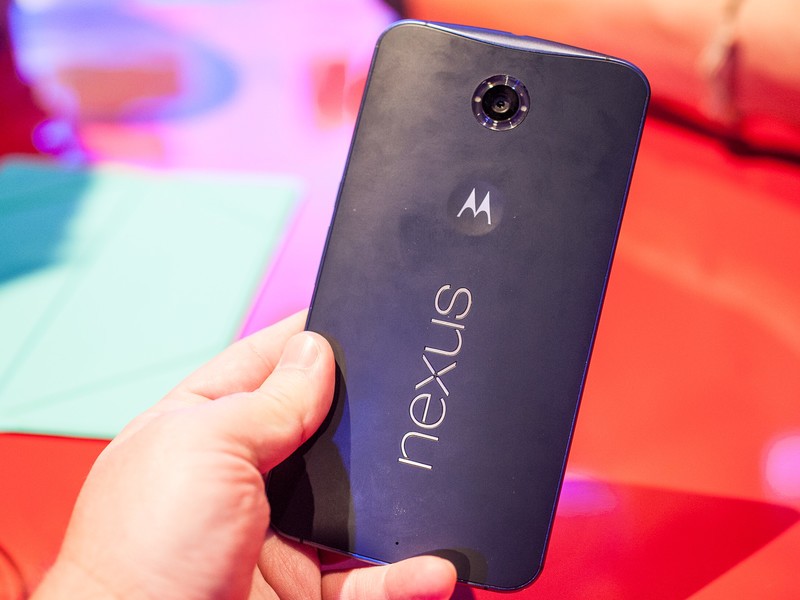
Phil: For me, the Nexus 6 is just too damn big. Full stop. And I'm just not sure it brings anything to the table that makes that size worth it. Especially when you consider that the 2014 Moto X will get updates nearly as fast, have most if not all of the same features (and then some — we'll have to see what else Motorola adds) and pretty much provide the same experience in a phone that's not nearly as unwieldy. That's not to say it'll be that way for everyone — some will love the huge Nexus 6. And if you're looking for something like HTC's BoomSound experience, the front-facing speakers on the Nexus 6 are about as close as you can get.
The Nexus 9 is a lot of fun, though. It's definitely more of a two-handed experience than the Nexus 7. But the front-facing speakers make a big difference, it's the first proper 64-bit device we've got on Android and games are that much more fun on a slightly larger device. The new 4:3 aspect ratio means a lot of apps need to be redesigned, though — including a number of Google's apps. You just can't get away with the same layouts like you could on the Nexus 7.
Jerry: I will clutch my Nexus 5 and Nexus 7 tighter than ever. For me, the Nexus 6 is too big to carry around outside of the house. I want my phone to be there when I need it, but I also want to not notice it's there when I don't.
The 4:3 aspect ratio on the Nexus 9 means I'll have a letterbox of some sort when I watch video, and watching video is my main use of a tablet. The aspect ratio is what I hate about the iPad Mini, and I don't see any way the Nexus 9 can change that.
They both will be very cool devices, and perfect for a lot of people. I'm just not one of them.
Andrew: When Google confirmed the screen size and dimensions of the Nexus 6, it sealed the deal for me to buy myself a Moto X instead. After reviewing the Galaxy Note 4 I knew I couldn't handle a phone that big regularly, let alone one that's taller, thicker and wider than the Note. I just keep asking what exactly the larger screen of the Nexus 6 brings to the table other than just being huge, and I still haven't found a reason for it to be so large. I use a phone in one hand far too often to deal with a 6-inch device.
My time with the Nexus 9 has me more excited about it than the phone. As someone who doesn't use a tablet on a daily basis I'm still somewhat bearish on the idea of dropping $399 or more on one, but in the wide realm of tablets it's a nice piece of kit. There are growing pains to live with moving to 4:3, that's for sure, but in the end I feel it's a better aspect ratio for this large of a device than 16:9. It may just take a handful of months for apps to get sorted out on that larger size let's hope Google sticks with it and leads by example with its own offerings.
Alex: If I was in the market for a new tablet, the Nexus 9 would be near the top of my list. HTC and Google seem to have done a great job developing a premium tablet with killer specs, and introducing a new form factor that's pretty much perfect for web browsing and reading. As I said previously, though, I don't have much interest in the Nexus 6. It looks big and unwieldy, and unlike competitors like the Samsung Galaxy Note 4, there's just not a whole lot on the software side to justify the size. (Though who's to say Google won't pull something out of its hat in the next version of Android.)
Given the weirdly large size of the Nexus 6, and the fact that Google's now working very closely with the carriers on the Nexus line, I have to believe (and hope) that there's a refreshed 5 to 5.5-inch Nexus-type phone in the works for next year. Maybe when Qualcomm's high-end 64-bit chips are ready we'll see something...
Richard: The Nexus 6 is too big to use as a main device. I've been carrying around Huawei's 6-inch Ascend Mate 7 for a while now, but not exclusively as my main device. I'm still using it alongside something else, primarily because of the size. I don't know if the Nexus 6 is bigger, or not, but I don't think I could do it. If you were getting something that warranted having such a huge screen, like Samsung does with the Note, then there'd be more of a case for it for me. But if it's just big for the sake of being big, I'm not that interested. Not when the Moto X 2014 is very close to being the same phone, but smaller, and will get software updates likely almost as fast. Sorry, Google.
The Nexus 9 is more enticing, but the form factor both pleases and concerns me. I love the 4:3 ratio, and it's one of the things I've always loved more about the iPad compared to Android tablets. But what concerns me is how apps are going to work in that screen orientation. I steer clear of large Android tablets because, still, there are too many apps that just look and behave like crap on the big screen. I don't want to be down on it before I've used it, because it really does look like a fabulous piece of hardware. But while I can stomach the less-than-ideal approach on a 7-inch tablet, I don't know what's going to happen on the Nexus 9. I want to be impressed.
Anything you think could be improved or would like to have seen done differently?
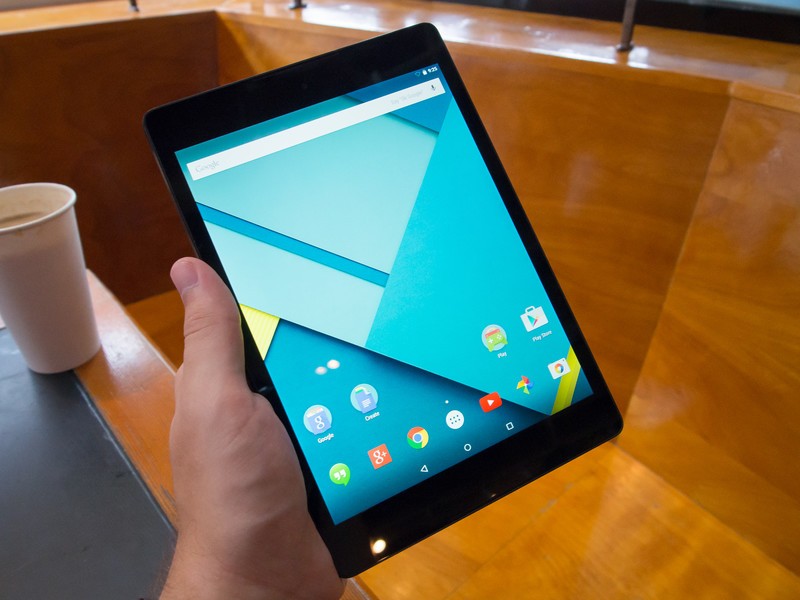
Phil: I just want a simple way to silence my phone. I don't want to think about notifications. I just a mute option. And my mom is going to want a mute option. Google seems to have over-engineered a problem nobody was having.
Jerry: I wish Google had waited and released a phone with the new Snapdragon 810 or an Intel ATOM to keep things a bit more future proof, but this is a minor complaint.
I'm not going to go into the size, because I can still use a Nexus 5 to get Lollipop at a size that works better for me. I've a feeling the smaller resolution screen will make the Nexus 5 run the new OS as well (or better) than the Nexus 6 does.
But that aspect ratio on the Nexus 9. I can't get over it. Different strokes for different folks, and this is how I stroke.
Andrew: Having spent the bulk of my time with Android 5.0 in the developer preview state I've seen Google come a long way with this release, and it's clear that there's still a bit more to be done. I'm sure there are going to be meaningful changes made in point release updates over the next few months to polish things out, making the base features all work the way they should. At this point I can't think of anything major that needs to be changed — it just needs to be cleaned up.
On the device front, I still can't get over the fact that the Nexus 6 has a huge screen for really no reason at all. I would have preferred Google do something interesting with the phone rather than just make it large, pushing away quite a few potential buyers who need something more manageable.
Alex: I think it'll take a little more time time to reveal any major gripes with Android 5.0. This is a major refresh to the OS, and there are bound to be teething issues. Expect those that arise to be addressed pretty quickly through point releases, Google Play Services updates before "Android M" (or whatever) tightens things up next year.
My biggest issue with Lollipop as a whole is the launch hardware. There's no small phone or cheap tablet, so if you want to get in on the ground floor, you're forced to go with a gigantic handset or a tablet that might be more expensive (and more squarish) than you want. Again, I'm hoping for more Nexuses in 2015 to address this gap in Google's lineup.
Richard: I'm not alone in feeling the biggest issue with the Lollipop launch is the hardware that's coming with it. Sure, the Nexus 6 is a premium phone (at a premium price) but it's just too damn big for no reason I can see other than being big.
The OS seems really polished, but the true test of just how polished will be when its in more hands, on more devices. It's a major step forward for Android, and it's going to lead to even greater things in the future.
So, there you have it. Some of our personal thoughts on Lollipop so far. We've got so much more to come, so be sure to keep an eye on our Lollipop topic page and watch our for our forthcoming Nexus 9 and Nexus 6 reviews!

